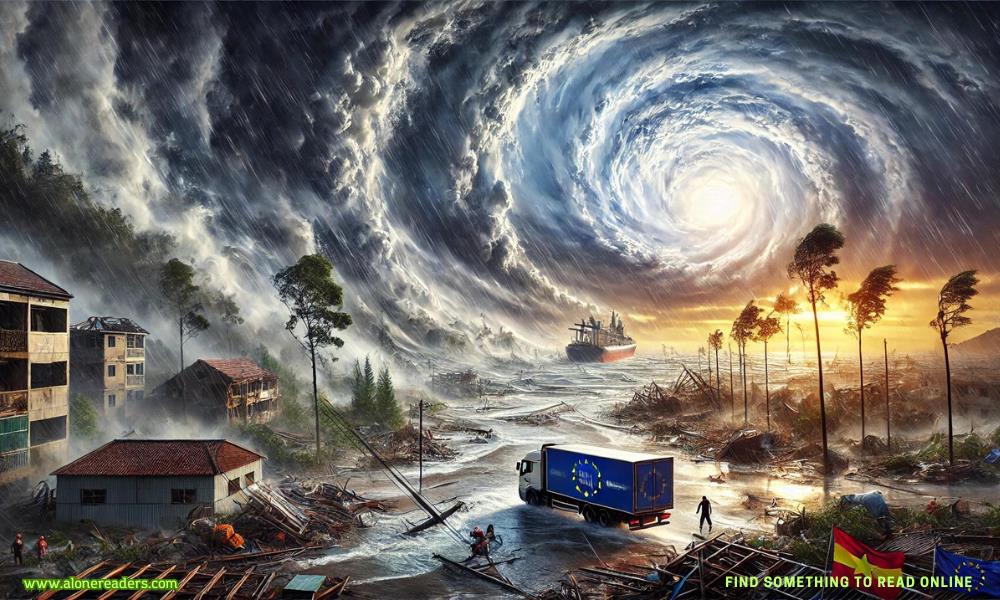
In a devastating turn of events, Super Typhoon Yagi made landfall in Vietnam, leaving a trail of destruction that has claimed the lives of hundreds and left thousands more displaced. Considered the deadliest storm of the year, Yagi's sheer force has wiped out entire villages, severely damaged critical infrastructure, and left many regions struggling to recover from the aftermath. The global community, especially Europe, has rallied to support Vietnam, sending much-needed humanitarian aid and resources to help the country rebuild.
Super Typhoon Yagi formed over the Pacific Ocean in late September, rapidly intensifying into a Category 5 storm as it moved westward. Weather agencies had been closely monitoring the storm, but its unexpected escalation left little time for preventive measures. As Yagi neared Vietnam’s central coast, authorities issued evacuation orders for coastal communities, but the storm’s size and strength overwhelmed even the most prepared regions.
Yagi struck Vietnam with winds exceeding 185 miles per hour and heavy rainfall, causing massive flooding and landslides. Coastal provinces, including Quang Nam, Da Nang, and Quang Ngai, bore the brunt of the typhoon's impact, with widespread destruction to homes, farmlands, and infrastructure. Entire communities were submerged under floodwaters, and landslides buried homes and roads, cutting off access to many areas in need of urgent assistance.
As of the latest reports, more than 500 people have been confirmed dead, with many still missing. The typhoon left nearly 100,000 people homeless, as their homes were either washed away or rendered uninhabitable by the storm's relentless winds and rains. Hospitals and emergency centers are operating at full capacity, treating those injured by debris and collapsed buildings.
Power lines have been downed across the affected regions, leaving millions without electricity. Roads, bridges, and transportation networks have been severely damaged, hindering rescue and relief operations. Communication systems are down, and the government has appealed for satellite communication aid to better coordinate relief efforts. Local authorities are working tirelessly to restore basic utilities and services, but the scale of the disaster has overwhelmed their resources.
In response to the disaster, Europe has emerged as a key international partner in providing aid to Vietnam. The European Union, along with several European nations including France, Germany, and the United Kingdom, has pledged millions of euros in humanitarian aid to support the relief efforts. European humanitarian organizations, such as the Red Cross and Doctors Without Borders, have mobilized teams on the ground to offer medical assistance and distribute supplies to the most affected areas.
The European Commission issued a statement expressing deep condolences to the people of Vietnam and reiterated the bloc's commitment to providing both immediate and long-term assistance. EU aid packages include essential food supplies, clean drinking water, sanitation equipment, and temporary shelter materials. Medical supplies, including vaccines and antibiotics, have also been prioritized to prevent the outbreak of diseases often associated with post-disaster conditions.
As Vietnam grapples with the aftermath of Super Typhoon Yagi, global climate experts have warned that extreme weather events like this are becoming more frequent and more severe due to climate change. Vietnam, a country vulnerable to both storms and rising sea levels, has experienced an increase in extreme weather events in recent years. While local governments have taken steps to mitigate the risks, Yagi’s intensity underscores the need for more robust climate adaptation and disaster preparedness strategies.
The international community is increasingly calling for stronger global action on climate change to prevent such catastrophic weather events. The United Nations Secretary-General has urged developed nations to step up their commitments to climate finance, particularly to assist vulnerable countries like Vietnam in building resilient infrastructure and adapting to a changing climate.
Vietnamese authorities have begun organizing their disaster response efforts, though the road to recovery will be long and difficult. The government has set up temporary shelters for displaced families, but many are still without access to adequate food, clean water, or medical care. Emergency relief teams are working day and night to rescue those trapped by landslides and provide first aid to those in critical condition.
The Vietnamese government has also called for international aid, specifically requesting additional financial support to rebuild essential infrastructure such as schools, hospitals, and roads. Rebuilding efforts in the agricultural sector will also be critical, as much of Vietnam’s rice fields have been flooded, threatening the country’s food security in the coming months.
The aid provided by Europe is seen as a lifeline for Vietnam as it begins to recover from one of the deadliest storms in recent history. France, which has strong historical ties with Vietnam, was one of the first countries to respond, sending a fleet of medical teams, helicopters, and rescue equipment to assist in the hardest-hit regions. Germany has committed to providing long-term support through infrastructure rebuilding projects, while the United Kingdom has announced an emergency aid fund to help address immediate humanitarian needs.
European countries are also discussing additional climate resilience initiatives, including funding for early warning systems and flood defenses in Southeast Asia. Several EU member states have pledged to support Vietnam in developing more sustainable agricultural practices and disaster-resistant housing to better withstand future storms.
The devastation caused by Super Typhoon Yagi has left deep scars on Vietnam, and the recovery process will be a monumental task. While European aid and international support provide a beacon of hope, it will take years for Vietnam to fully recover from this disaster. In the coming weeks, the focus will remain on saving lives, delivering critical supplies, and restoring basic services. But the long-term challenge lies in rebuilding communities and livelihoods while preparing for the increasing threat of climate-induced natural disasters.
Vietnam’s resilience and the solidarity of the international community will be key to overcoming the immense challenges posed by Super Typhoon Yagi. As the country starts to heal, the lessons learned from this disaster will serve as a reminder of the urgent need for coordinated global action on climate change, disaster preparedness, and humanitarian assistance.